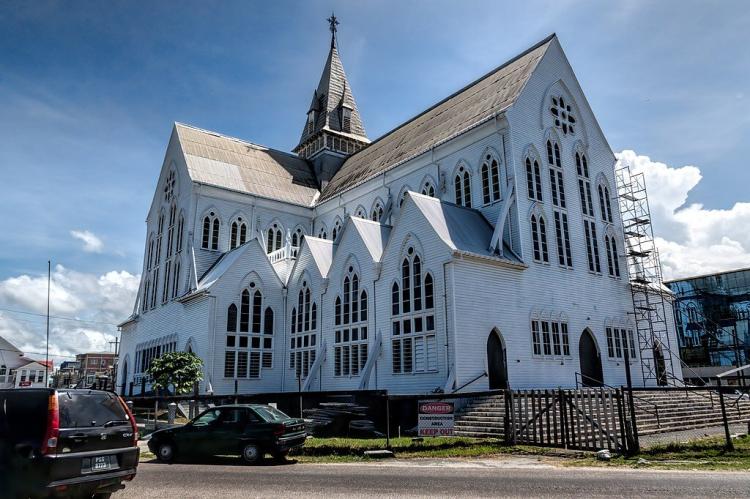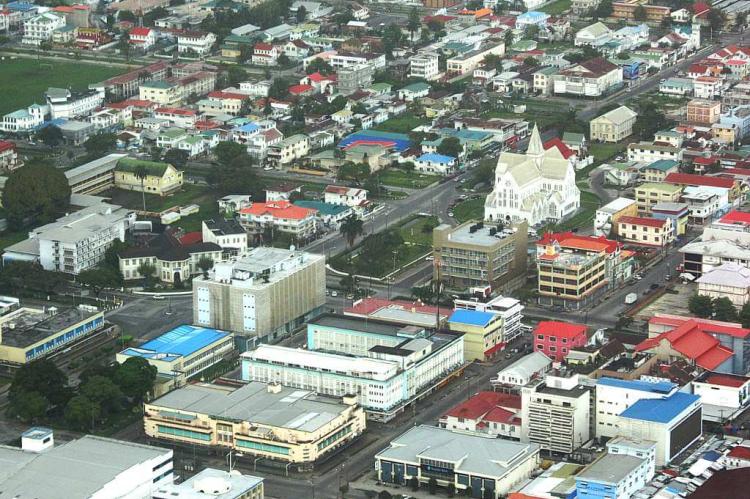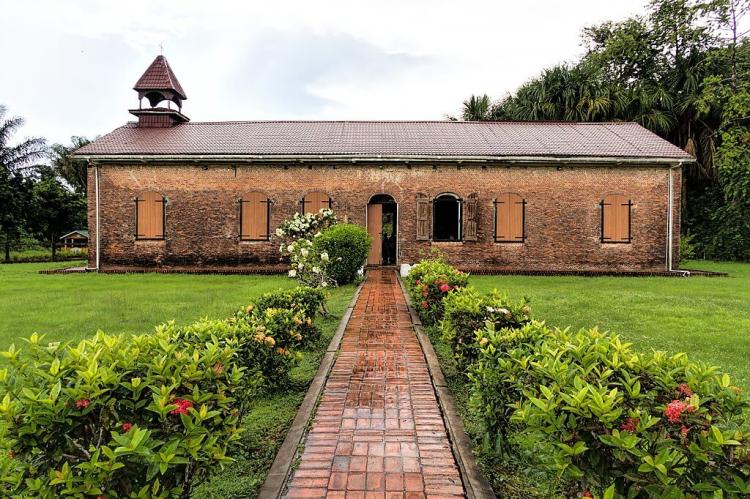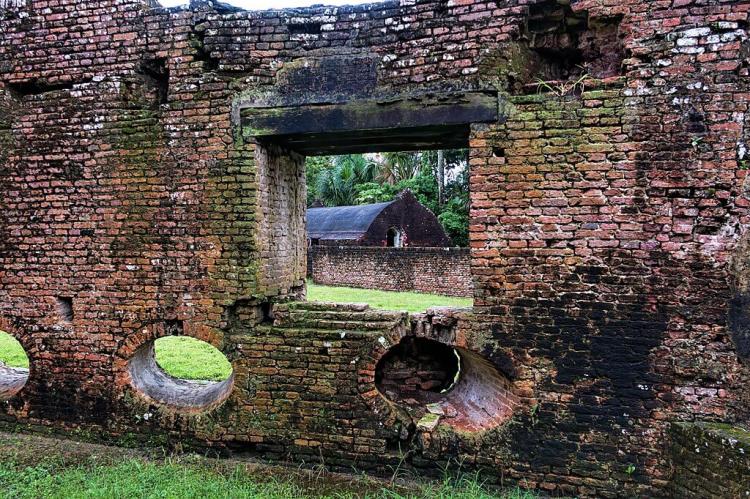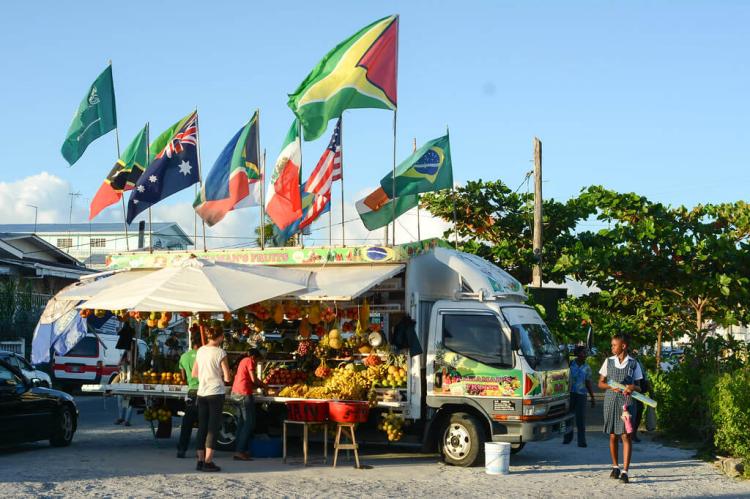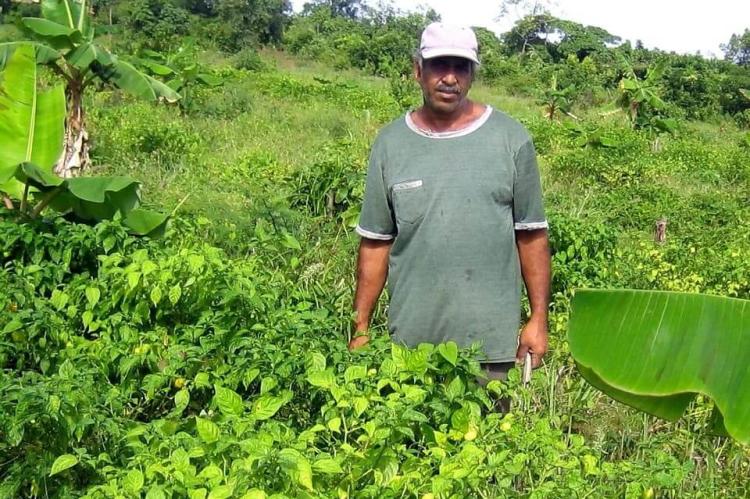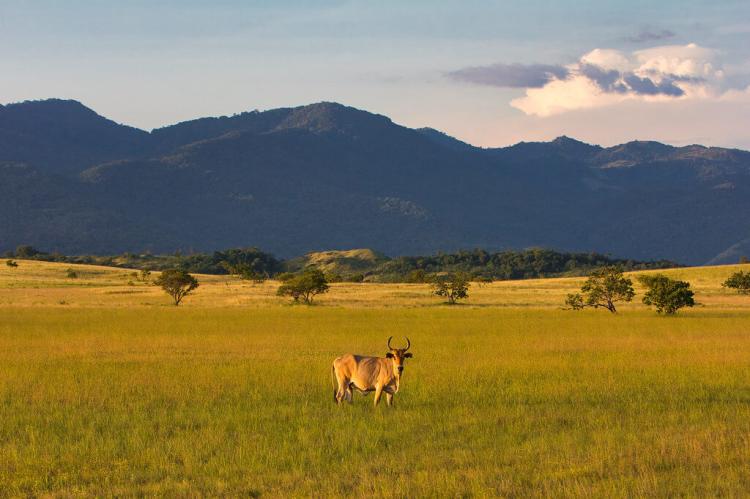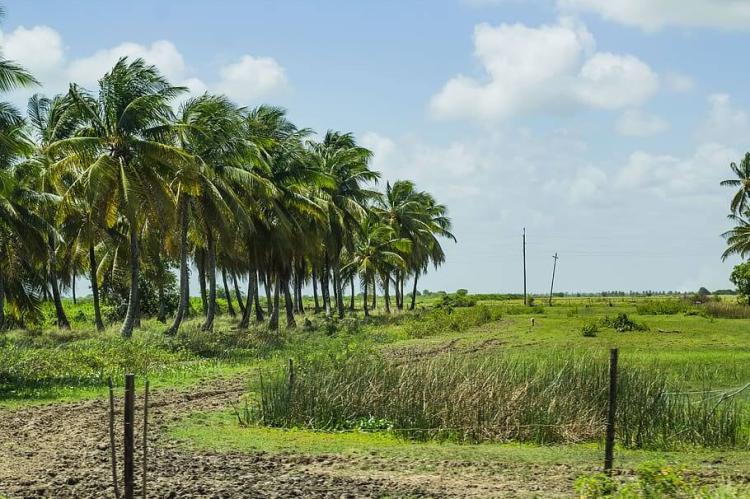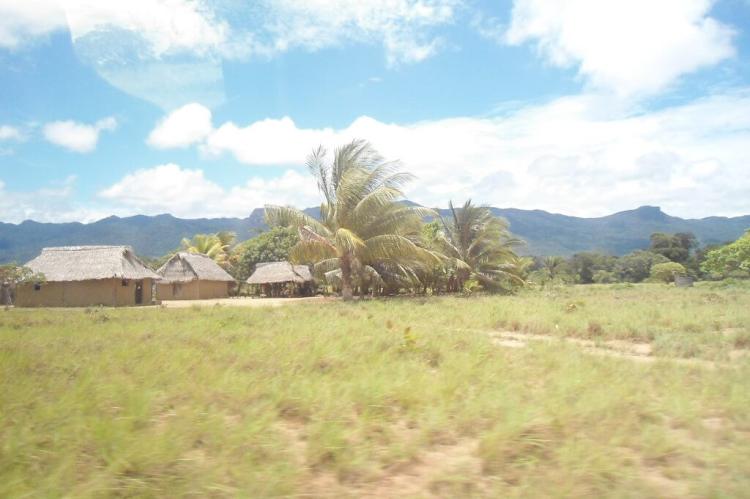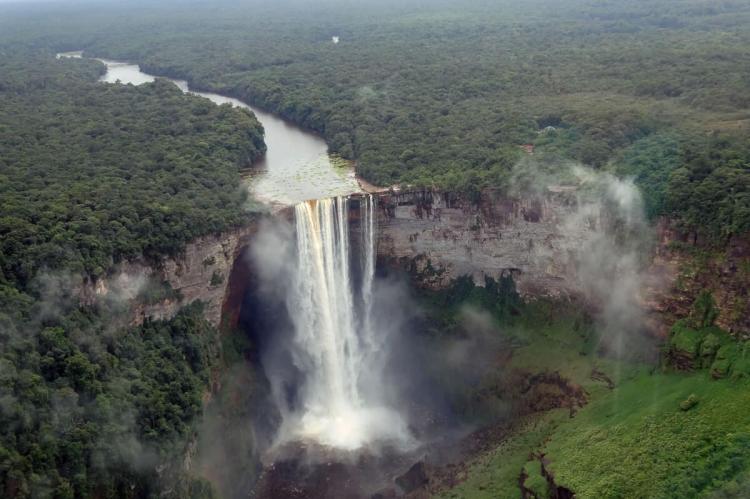Guyana: Cultural Landscape
Guyana, located on the northern coast of South America, boasts a rich and diverse cultural landscape shaped by its history, ethnic makeup, and geographical characteristics. The country is known for its fusion of indigenous, African, Indian, European, and Chinese cultures.
The Cultural Landscape of Guyana
Guyana, located on the northern coast of South America, boasts a rich and diverse cultural landscape shaped by its history, ethnic makeup, and geographical characteristics. It is part of the region known as "The Guianas," which includes French Guiana and Suriname. The country is known for its fusion of indigenous, African, Indian, European, and Chinese cultures, which have blended over the centuries to create a unique and vibrant society.
-
Ethnic Diversity: A diverse population characterizes Guyana. The major ethnic groups include Indo-Guyanese (descendants of Indian indentured laborers), Afro-Guyanese (descendants of enslaved Africans), and Amerindians (indigenous peoples). These groups have contributed significantly to the country's cultural tapestry, preserving its distinct traditions, languages, music, and cuisine.
-
Indigenous Heritage: Guyana has several indigenous tribes, such as the Arawak, Carib, Wai-Wai, Macushi, and many others. These communities have preserved their ancestral customs, rituals, and traditional knowledge. Indigenous art, craftwork, and music play an essential role in Guyanese culture, with vibrant costumes, intricate pottery, and unique musical instruments.
-
Creole Influence: The fusion of African, European, and Amerindian cultures has created a vibrant Creole culture in Guyana. Creole cuisine, language (Guyanese Creole), music (such as calypso and reggae), and festivals (like Mashramani and Phagwah) reflect this blend and serve as a unifying force among different ethnic groups.
-
Indo-Guyanese Heritage: Indo-Guyanese culture, influenced by the descendants of Indian indentured laborers, is prominent in Guyana. It is characterized by its vibrant Hindu and Muslim traditions, including religious festivals like Diwali and Eid. Indo-Guyanese cuisine, featuring curries, rotis, and sweets, is widely enjoyed and has become an integral part of Guyanese culinary heritage.
-
Afro-Guyanese Culture: Afro-Guyanese culture is deeply rooted in West African traditions, which have been preserved through storytelling, music (such as steelpan, soca, and reggae), dance (like the energetic "jig"), and religious practices like the African-derived-religion of Winti. Afro-Guyanese folklore and rituals continue to be celebrated and passed down through generations.
-
Cultural Celebrations: Guyana celebrates diverse cultural events throughout the year. These include the Guyana Carnival, the annual arrival of the first Indian indentured laborers (known as Indian Arrival Day), and the diverse religious festivals celebrated by different communities. These celebrations serve as platforms for showcasing cultural heritage and promoting unity.
-
Literature and Arts: Guyana has produced notable writers, poets, and artists significantly contributing to Caribbean literature and art. Writers like Edgar Mittelholzer, Wilson Harris, and David Dabydeen, among others, have depicted Guyanese experiences in their works. The visual arts scene is also vibrant, with talented painters, sculptors, and craftspersons showcasing their talents and reflecting Guyanese culture.
-
Music and Dance: Music and dance are integral parts of Guyanese culture. The music scene incorporates various genres such as chutney, reggae, calypso, soca, and traditional Amerindian music. Folk dances like the Jonkonnu, Jig, and Dandiya Raas showcase the diverse cultural influences present in the country.
-
Cuisine: Guyanese cuisine reflects the fusion of various cultural influences. It draws from Indian, African, Chinese, European, and Indigenous culinary traditions. Popular dishes include curry (both meat and vegetarian), roti, pepperpot (a traditional meat stew), and various seafood dishes. Guyanese cuisine often features spices, herbs, and flavors that reflect the country's diverse heritage.
Contemporary Influences on Guyanese Culture
Guyanese culture is a dynamic blend of its rich historical roots and contemporary influences, which continue to shape its identity in a globalized world. The following are a few examples of how modern influences shape Guyanese culture:
-
Globalization: Globalization has led to the introduction of new cultural influences from all over the world. This can be seen in the popularity of American movies, TV shows, and music, as well as the growing number of international restaurants and businesses in Guyana.
-
Social media: Social media has made connecting with people from different cultures easier for Guyanese. This has led to a greater awareness of other cultures and a more open society.
-
Education: Guyana invests heavily, leading to a more educated and informed population. This is having a positive impact on Guyanese culture, as it is leading to a more tolerant and understanding society.
-
Technology: Technology also has a significant impact on Guyanese culture. This can be seen in the popularity of smartphones, computers, and social media. Technology is making it easier for Guyanese people to connect with the rest of the world.
Challenges Facing Guyanese Culture
The following are some of the challenges facing Guyanese culture:
-
Poverty: Poverty is a significant challenge for many Guyanese people, and it can make it difficult to participate in cultural activities. For example, many people may not be able to afford to attend concerts, festivals, or other cultural events.
-
Crime: Crime is another major challenge in Guyana, and it can make people feel unsafe and unwilling to participate in cultural activities. For example, people may hesitate to go out at night or visit certain country areas.
-
Discrimination: Discrimination is also a challenge in Guyana, and it can prevent people from participating in cultural activities. For example, people may be discriminated against because of their race, ethnicity, gender, or sexual orientation.
-
Lack of awareness: Some people may not be aware of their culture or the importance of preserving it. This can lead to a loss of interest in cultural activities and a decline in cultural participation.
-
Globalization: Globalization can introduce new cultural influences that overshadow or displace traditional Guyanese culture. For example, people may be more interested in watching American movies and TV shows than traditional Guyanese cultural activities.
Despite these challenges, Guyanese culture is still thriving in Guyana. Many people are working to preserve and promote Guyanese culture. For example, many cultural organizations offer traditional Guyanese music, dance, and art classes. Many festivals and events celebrate Guyanese culture.
Guyana's government also supports efforts to preserve and promote Guyanese culture. For example, the government has established a Ministry of Culture, Youth and Sport responsible for promoting Guyanese culture and heritage. The government has also invested in cultural infrastructure, such as museums and libraries.
The challenges facing Guyanese culture are complex and difficult to overcome. However, there is a growing awareness of the importance of preserving and promoting Guyanese culture. With the support of the government and the people of Guyana, Guyanese culture can continue to thrive for many years.
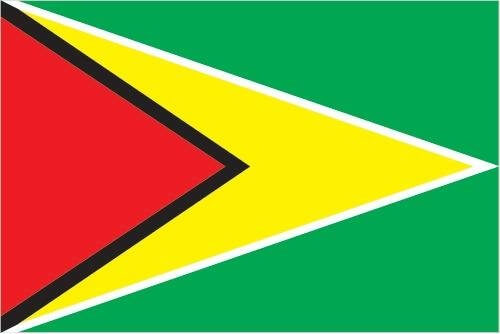
The official flag of Guyana
Cultural Geography of Guyana
Largest Cities / Metro Areas
Ranked by population estimate (2023):
-
Georgetown (235,000): Georgetown is Guyana's capital and largest city. It is located on the Atlantic coast of Guyana, at the mouth of the Demerara River. The British founded the city in 1781, and it is known for its colonial architecture, vibrant markets, and delicious food. Georgetown is a popular tourist destination home to many historical and cultural attractions, including the St. George's Anglican Cathedral, the Parliament Building, and the Guyana National Museum.
-
Linden (45,000): Linden is a town on the Demerara River in northeast Guyana. It is primarily a bauxite mining town, containing many mines 60 - 90 m (200 - 300 ft) deep, with many other pits now in disuse. Linden is the regional capital of Upper Demerara-Berbice.
-
New Amsterdam (35,000): New Amsterdam is a town on the Berbice River in northeast Guyana. It is a commercial and manufacturing center for the agricultural and pastoral coastal lowlands, where sugarcane, rice, and cattle are raised. The town can be reached by road from Georgetown, the national capital, and via a ferry across the Berbice River to Rosignol.
-
Anna Regina (12,000): Anna Regina is a town on the Atlantic coast of Guyana in the Pomeroon-Supenaam Region. It is the regional capital and is a popular tourist destination known for its beaches, fishing, and birdwatching.
-
Bartica (11,000): Bartica is a town on the Essequibo River in Guyana. It is the regional capital of Cuyuni-Mazaruni. Bartica is a popular tourist destination known for its location on the Essequibo River, proximity to gold and diamond mines, and vibrant nightlife.
Administrative Divisions
Guyana has been divided administratively into ten regions and 27 neighborhood councils. The hyphenated names of the regions indicate the rivers that define their borders.
Regions
The administrative regions of Guyana and their capital cities in parentheses, along with brief descriptions, are as follows:
-
Barima-Waini (Capital: Mabaruma): Located in northwest Guayana, this region is known for its diverse indigenous communities and pristine rainforests.
-
Pomeroon-Supenaam (Capital: Anna Regina): Located on the Atlantic coast in the western part of Guyana, this region is known for agriculture, including rice and fishing.
-
Essequibo Islands-West Demerara (Capital: Vreed-en-Hoop): Located along the coast in the western part of Guyana, the region includes the capital city of Georgetown and its surrounding areas.
-
Demerara-Mahaica (Capital: Triumph): Located along the coast in the northeastern part of Guyana, the region includes major urban areas such as Georgetown and its suburbs.
-
Mahaica-Berbice (Capital: Fort Wellington): Located along the coast in the northern part of Guyana, the region is known for agriculture, particularly rice and sugar.
-
East Berbice-Corentyne (Capital: New Amsterdam): Located in the northeast of Guyana, bordering Suriname, the region is known for agriculture, including rice and sugar.
-
Cuyuni-Mazaruni (Capital: Bartica): Located on the Essequibo River in the west-central part of Guyana, the region is rich in natural resources, including gold and minerals.
-
Potaro-Siparuni (Capital: Mahdia): Located in the central part of Guyana, the region is known for its rugged, mountainous terrain and mining activities.
-
Upper Takutu-Upper Essequibo (Capital: Lethem): Located in the southern part of Guyana, bordering Brazil, the region features savannas, forests, and a diverse indigenous population.
-
Upper Demerara-Berbice (Capital: Linden): Located in central Guyana, the region is known for bauxite mining and the town of Linden.
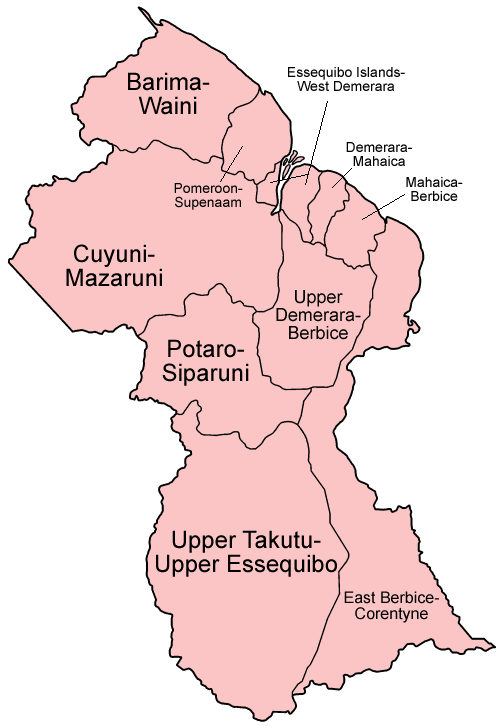
Map depicting the regions of Guyana
Border Disputes
Suriname's territorial dispute with Guyana revolves around a region spanning approximately 15,000 square kilometers (5,800 square miles) between two tributaries of the Courantyne River in southern Guyana. This disagreement has deep historical origins and continues to be a point of contention, contributing to ongoing tension between these neighboring countries.
Guayana Esequiba
Guayana Esequiba, spanning approximately 159,500 square kilometers (61,600 square miles), is at the core of a prolonged territorial dispute between Venezuela and Guyana. Situated to the west of the Essequibo River, this region falls under the administration and control of Guyana.
Despite Guyana's governance, Venezuela maintains historical claims to the territory, presenting a diplomatic challenge that has endured for decades. Guyana's control is rooted in the 1899 Paris Arbitral Award; however, Venezuela continues to contest this arrangement.
The dispute regained prominence in December 2023 when Venezuela rekindled its claim to the territory. This resurgence coincided with the discovery of substantial oil and gas reserves, estimated at around 11 billion barrels, off the coast of Guyana.
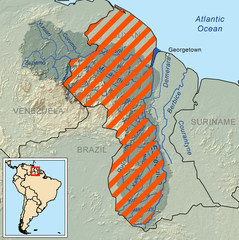
Map of the Guayana Esequiba: The orange-striped area constitutes the area claimed by Venezuela.
Geographic Regions (Zones)
Guyana can be divided into three main geographic regions or zones:
-
Coastal Plain: The coastal plain extends along the coast of the Atlantic Ocean. Extending only 5 - 6 km (3 - 4 mi) on average and 16 km (10 mi) at its widest, this narrow plain is home to more than 90% of the country's population.
-
White Sand Belt: Inland from the coastal plain is an area of low sandy hills interspersed with rocky outcroppings. A line of swamps forms a barrier between these interior hills and the coastal plain.
-
Interior Highlands: The interior highlands are the largest of Guyana's geographical regions. The region consists of plateaus, flat-topped mountains, and savannahs extending from the white sand belt to the country's southern borders.
See more: Natural Landscape of Guyana
Historical, Cultural, and Natural Landmarks
Guyana, with its diverse landscapes and cultural heritage, offers a range of attractions and landmarks that showcase the country's natural beauty, history, and cultural richness.
Attractions and Landmarks
-
Kaieteur Falls: Located in the pristine rainforest of the Guiana Shield, Kaieteur Falls is one of Guyana's most iconic natural landmarks. With a sheer drop of 226 m (741 ft), it is one of the tallest single-drop waterfalls in the world. The sheer power and beauty of the falls attract visitors from around the globe.
-
Georgetown: As the capital city, Georgetown is a hub of history, culture, and architectural charm. Landmarks in Georgetown include St. George's Cathedral, one of the tallest wooden churches in the world; the Stabroek Market Clock Tower; and the Parliament Building. The city's vibrant markets, museums, and cultural events make it a must-visit destination.
-
Iwokrama Forest: This vast rainforest spans nearly one million acres and is renowned for its incredible biodiversity. The Iwokrama Forest is home to jaguars, giant river otters, harpy eagles, and numerous plant and bird species. It offers opportunities for nature walks, birdwatching, and exploring the unique ecosystems of Guyana.
-
Shell Beach: Along Guyana's northern coastline lies Shell Beach, a scenic coast known for its abundant seashells. It is a nesting site for several species of sea turtles, including the endangered leatherback turtles. Witnessing the turtles laying their eggs during the nesting season is a remarkable experience.
-
Rupununi Savannah: The vast Rupununi Savannah in southern Guyana is a haven for wildlife and a breathtaking landscape of grassy plains and wetlands. Visitors can embark on wildlife safaris and birdwatching excursions and interact with the local Indigenous communities, gaining insights into their traditions and way of life.
-
Guyana's Protected Areas: Guyana boasts numerous protected areas that showcase its pristine ecosystems and diverse wildlife. Notable sites include Kanuku Mountains, Kaieteur National Park (home to Kaieteur Falls), Iwokrama Forest Reserve, Shell Beach Wildlife Management Area, and the Essequibo Islands-West Demerara Coast Ramsar Site.
-
Historic Plantations: Guyana has several historic sugar and rum plantations that glimpse the country's colonial past. These include the Leonora Estate, Uitvlugt Estate, and the historic El Dorado Rum Distillery. Visitors can explore the plantations, learn about the sugar industry, and sample Guyana's famous rum.
-
Indigenous Communities: Guyana is home to various Indigenous communities, each with its distinct culture, traditions, and way of life. Visiting Indigenous communities, such as Surama Village or Annai Village, allows visitors to experience their hospitality, learn about their customs, and witness traditional crafts and practices.
